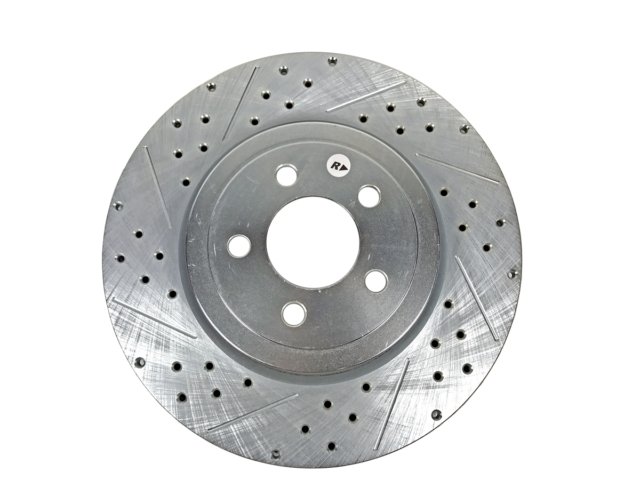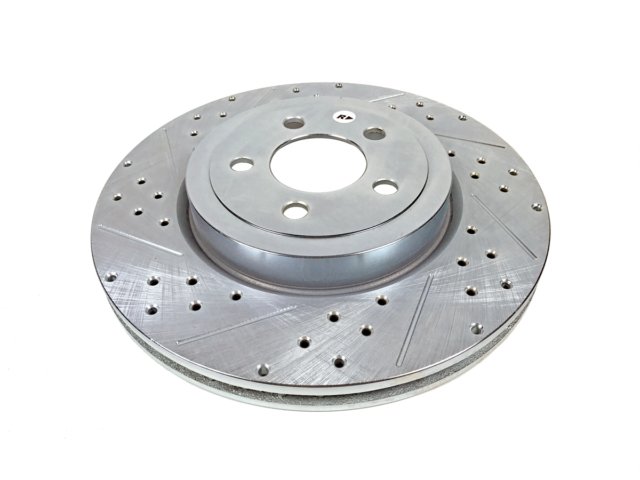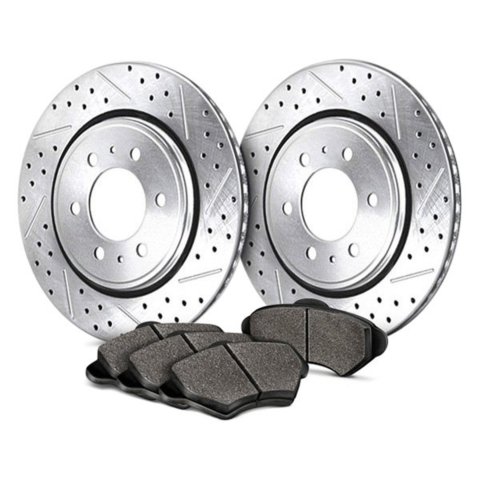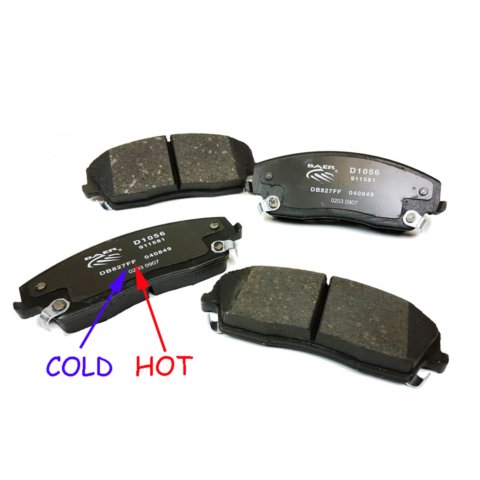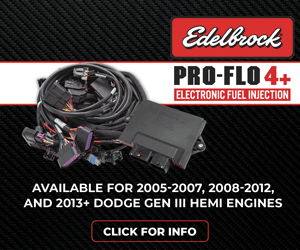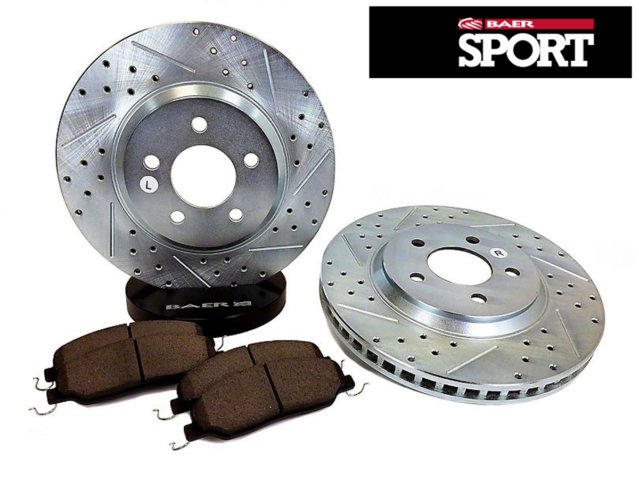
Above: Baer Sport offers direct-fit rotors and pads for our favorite late-model Challengers, Chargers, and 300s. However, Baer Sport also has rotors and pads for Jeeps, Rams, Durangos, Vipers, and many other Mopars from the 1990s to 2016.
During the muscle car boom (arguably between the years 1964-1974), the focus of the manufacturers tended to lean toward straight-line performance. Whether it was at the drag strip or a little street action, it seemed that the manufacturers were most concerned with acceleration. The braking systems seemed to be an afterthought at best. Take a look at the factory brakes on many of the heavy-hitter Mopars of the era. There were plenty of Hemis, 440-6bbls, 440s, 383s, and 340s rides that came from Ma’ Mopar with drum brakes on all four corners. Besides having an advantage of servo action, the drum brakes had a considerable list of disadvantages, brake fade being the greatest.
With the advent of Federal Motor Vehicle Safety Standard (FMVSS) 105 (implemented in July 1976), front drum brakes were no longer installed on new vehicles because they could not meet the minimum braking standards. With disc brakes on the front of a vehicle, aftermarket manufacturers started producing performance products for the disc brakes or components that would take advantage of the brakes.
Above left: The Baer Sport rotors come with their signature slotted and cross-drilled pad surface. The rotors are designed with slots and cross-drilled holes to help remove water and debris to aid in stopping a two-ton Mopar in shorter distances compared to factory rotors. Above right: Depending on the Mopar selected, the front rotors and many of the rear rotor applications are vented for additional cooling. All the Baer Sport rotors come with a zinc coating to virtually eliminate rust formation on the rotor’s pad surface or hat (hub mounting area of the rotor).
By the 1990s, the performance realm of the vehicles shifted from pure acceleration to braking and handling. And by the mid-2000s, Chrysler jumped in with both feet with the 300 as well as the Dodge Charger and Challenger. Although the Mopar disc brakes (front and rear) are excellent binders, companies like Baer Brake Systems have surpassed the factory braking systems with their Baer Sport factory replacement rotors and pads.
The Baer Sport rotors are factory replacement rotors machined with Baer’s signature slotted and cross-drilled brake pad surface. The slotting and cross-drilling help with the removal of the debris between the rotor surface and the pad friction material. The high-quality cast iron rotors are zinc plated to prevent rust and to keep the rotors looking factory fresh for years of use (and abuse).
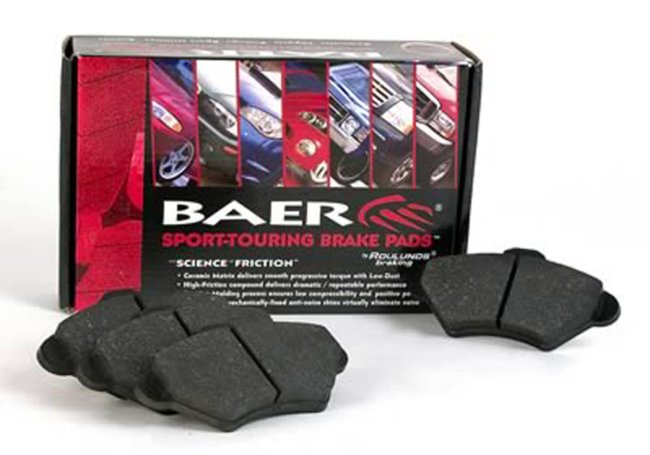
Above: The Baer Sport pads have a ceramic matrix design that provides remarkable and dependable performance, which significantly exceeds the factory pads. Advantages of the ceramic pads, besides their outstanding braking performance, are exceptional wear characteristics and considerably reduced brake dust.
To match the rotors, Baer offers the direct-replacement Baer Sport pads. The pads are a ceramic matrix design that delivers impressive and consistent performance under many different braking situations. The pads come equipped with anti-rattle shims, which nearly eliminate all the brake noise. Best of all, the ceramic pads provide excellent wear characteristics and significantly reduce brake dust.
The Baer Sport rotors and pads are an excellent performance addition to any late-model Mopar, and they do not require any modifications to the car. Just remove the old pads and rotors, install the new directional rotors, clean the calipers, install new pads, and install the caliper onto the factory spindle. Once installed, the more slotted/drill rotors and the more aggressive pads will deliver more whoa to match the go.
Above left: The edge branding number on the side of the pad (or on the anti-rattle shim of the Baer Sport pads) represents the coefficient of friction and the temperature for the pad’s best performance. The cold coefficient of friction temperature ranges from 200°F to 400°F, and the hot coefficient of friction temperature ranges from 300°F to 650°F. Above right: These pads are “FF” branded pads. The first letter represents the cold coefficient of friction, and the second letter represents the hot rating. With “FF” branded pads, the coefficient of friction is 0.35 to 0.45 at cold and hot temperatures. The coefficient of friction can range from 0-0.15 “C” rating (poor) to over 0.55 “H” rating (best). The cold and hot ratings can be different, such as “DE” or “EF.” Most of the coefficients of friction range between E through G for best performance and wear characteristics.
To determine what Baer Sport rotors and pads we needed for our test vehicle (2006 Charger), we got onto Baer Sport’s webpage, supplied the vehicle information, and pressed enter. Within seconds, options for the front and rear rotors were displayed. Clicking on the front or rear rotor icon provided us with a detailed list of information about the rotors, and at the bottom of the page, a pull-down box listed the pads for the rotors.
Impressed with our initial search, we ended up searching for rotors and pads for Challengers, Chargers, 300s, Rams, Jeeps, Durangos, Vipers, and many more. Baer Sport had offerings for every popular performance Mopar from the 1990s to 2016. If there is a desire for a bit more braking performance without swapping the wheels, calipers, or spindles, or the factory rotors and pads are ready for replacement, stop by Baer Sport for better than factory-direct replacement rotors and pads.



